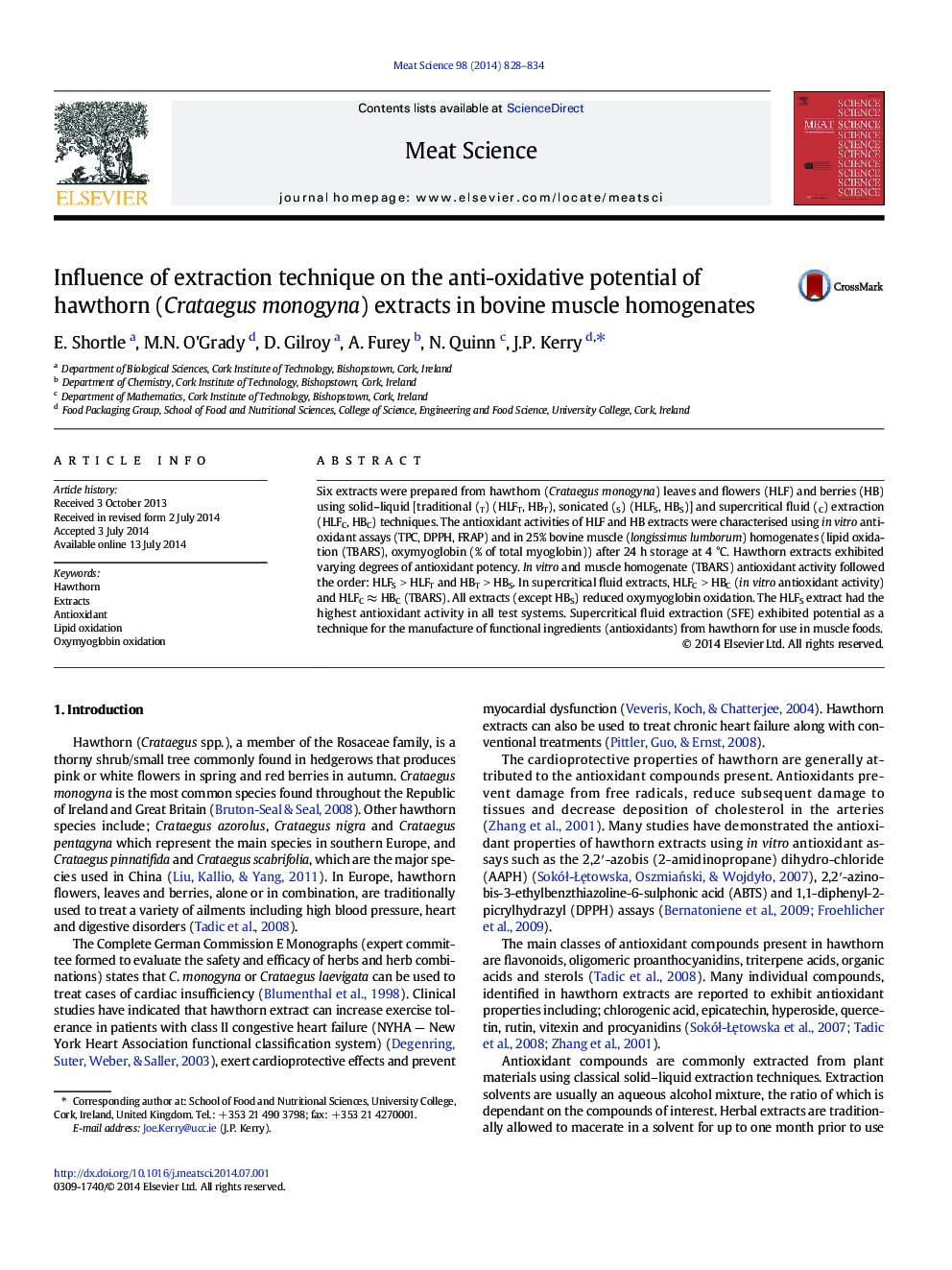| Article ID | Journal | Published Year | Pages | File Type |
|---|---|---|---|---|
| 2450019 | Meat Science | 2014 | 7 Pages |
•Solid–liquid (± sonication) and supercritical fluid extraction techniques were examined.•Extracts were prepared from Hawthorn leaves and flowers (HLF) and berries (HB).•HLF extract antioxidant activity was higher than HB extracts.•Extracts delayed lipid and oxymyoglobin oxidation in muscle homogenates.•HLF (solid–liquid extraction + sonication) was the most potent antioxidant extract.
Six extracts were prepared from hawthorn (Crataegus monogyna) leaves and flowers (HLF) and berries (HB) using solid–liquid [traditional (T) (HLFT, HBT), sonicated (S) (HLFS, HBS)] and supercritical fluid (C) extraction (HLFC, HBC) techniques. The antioxidant activities of HLF and HB extracts were characterised using in vitro antioxidant assays (TPC, DPPH, FRAP) and in 25% bovine muscle (longissimus lumborum) homogenates (lipid oxidation (TBARS), oxymyoglobin (% of total myoglobin)) after 24 h storage at 4 °C. Hawthorn extracts exhibited varying degrees of antioxidant potency. In vitro and muscle homogenate (TBARS) antioxidant activity followed the order: HLFS > HLFT and HBT > HBS. In supercritical fluid extracts, HLFC > HBC (in vitro antioxidant activity) and HLFC ≈ HBC (TBARS). All extracts (except HBS) reduced oxymyoglobin oxidation. The HLFS extract had the highest antioxidant activity in all test systems. Supercritical fluid extraction (SFE) exhibited potential as a technique for the manufacture of functional ingredients (antioxidants) from hawthorn for use in muscle foods.
